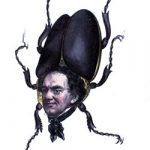Barnum on “Humbugging & Puffing”

P.T. Barnum’s honesty is one of the attributes we most often hear our visitors question: “Wasn’t he scamming people, making money from hoaxes?” Well, not exactly. Yes, he made money, but his intentions were not mean-spirited and deceitful. Though we see the occasional present-day media writer characterize Barnum as a scoundrel or charlatan—a dishonest showman—that view is simplistic and fails to take into account what much of popular entertainment was about in Barnum’s day. Hoaxes and humbugs were not the same thing—the former being akin to a cruel trick—and Barnum was firmly planted in the latter camp of providing entertaining amusements. Moreover, he wanted people to be curious and to exercise their intellect in debating whether a thing was truly a wonder of nature or a fake. So, what does the man himself have to say on the subject of humbugging and puffing? Barnum’s letter from Toulouse, France, to “Friend Stuart” (C. D. Stuart) in New York tells us plenty.

Mr. Stuart had recently returned from Detroit to the American Museum in New York to assist Barnum’s manager, Fordyce Hitchcock. Barnum wrote to Stuart on September 11, 1845, pleased to know he had returned, for,
I am convinced that you can help my interests there very much, with your talent for scribbling, puffing and humbugging, the last named species of talent being particularly requisite for our line of business, for as the Lord does not work miracles now-a-days—and as the people are determined to see miracles wrought & are willing to pay for them too—of course it is our duty as well as pleasure & profit to perform said miracles, or rather pretend to do so which is quite as well provided the thing is managed adroitly. Let “humbug” then be the motto, but do not confound that charming and valuable science with the stupid catch-penny impositions of the day, which bear the stamp of falsehood upon their brow, & make each victim exclaim, ‘”curse the rascal [–] he has cheated me.”
Barnum wanted to be certain that Stuart thoroughly understood what he meant by an “honest” humbug and its desired effect on the audience:
A genuine humbug consists in making a man feel that he has got the worth of his money—that he has seen wonders such as could not be found elsewhere on the face of the earth—that those wonders must have cost the “enterprising & liberal proprietor” many sleepless nights & oceans of gold—and that in fact and in truth the beholder of the humbug is much indebted to the owner thereof for having kindly permitted him (by paying for it) to behold this precious sight, whatever it may be.
Barnum further advised Stuart, “A humbug to be profitable must be such an one as will bear puffing, for although you may by puffing get persons once to visit a palpable humbug—they will neither visit it, nor its owner twice.” Of course, it was one thing to acquire the perfect humbug, but its success was quite dependent upon the right formula of promotion. “Scribbling and puffing,” and “soft-soaping” influencers (i.e., giving free tickets) were essential, and the humbug had to hold up to a fair degree of scrutiny and expectations so that continued promotion would not fall flat. Barnum humorously instructs Stuart on the art of puffery:
Having secured the proper humbug, the first thing to be done is to puff it, and in these days of universal & scientific puffing, very much depends upon the manner of conducting this branch of the business. The plain out-and-out direct editorial puff is little better than an advertisement—and but little better. The puff indirect, or puff oblique—the puff served up as the French serve up all their viands, smothered in sauce & gravy—is the best kind of a puff. If you gild it with a covering of science—cover it with an anecdote or half-smother it in poetry—it is all very well.
Barnum goes on to explain why the “sauce & gravy” were so important, as he imparts a marketer’s wisdom. “The public is a queer fish, and no ‘fish’ which is up to snuff will bite at the naked hook—much depends on procuring the proper bait—more depends on placing the bait properly on the hook.”
In addition to asking Stuart to promote the Museum and its attractions in the New York City papers, Barnum also suggested he send his “scribblings” to newspaper correspondents outside of the city, and to be sure and send occasional free tickets. Stuart had apparently caught the showman’s attention with his talent for lively and convincing descriptions. Encouraging him to promote the newly-acquired Dissolving Views, he wrote, “You are a poet—I am not, and therefore you can do these things—I cannot. Still, I am like the man who drew the picture of a whale—he had never seen one but he knew how one [looked].” Sixteen years later, Barnum would, in fact, be showing live Beluga whales in his American Museum—a “first”—and that was no humbug!
Adrienne Saint-Pierre,
Barnum Museum Curator

